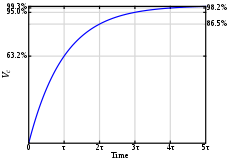Side note - the high tech investing company they refer to also put early cash into Amazon among others, they have a reputation for putting cash early on into game changers. (They've invested 3 million so far).Ars wrote:Supercapacitor "battery" could lead to instant charging, long charge life
The batteries we rely on for everything from our cars to our cell phones use a chemical reaction to store and release an electrical charge. The chemicals involved force a large number of tradeoffs in terms of practical considerations, such as weight, toxicity, heat, and the slow charging process.
News is filtering out that a small startup company in Texas has made a breakthrough in charge storage that relies on a completely different technology: capacitors. Details are scarce, but a company that has licensed the technology suggests that it's ready for large-scale production.
For those of you who don't remember high school physics, a capacitor stores charge by arranging two metal plates in parallel. Placing a negative charge in one of the plates will repel electrons from its opposite; this charge difference will be maintained as long as the two plates remain electrically isolated and can be harnessed to produce a useful electric current. A key advantage of capacitors is that they can store charge just as quickly as it's supplied—the long charge times needed by chemical batteries are simply unnecessary. With no chemical reactions involved, capacitors should also have an indefinite life span.
These features may lead you to wonder why everything isn't running on capacitors.
The primary limit to the amount of electrical charge that can be stored in a capacitor is the amount of insulation between the plates, which prevents a current from jumping directly between them.
Existing insulators simply aren't good enough to support a charge density comparable to chemical batteries. In short, capacitors with a sufficient charge capacity take up far too much space.
The Texas company behind the apparent breakthrough, EEStor, is primarily notable for two things: its secrecy (it doesn't even have a web site to link to) and a patent application that describes a process for manufacturing a well-insulated capacitor.
It apparently relies on barium titanate (BaTiO3) as an insulator, something that's been tried in the academic world. But line eight of the patent application suggests that the charge storage is much higher than anything achieved in an academic lab: 52 kilowatt-hours in a 2,000 cubic inch capacitor array. A rough conversion calculation suggests that this is over 10 times the power density of standard lead-acid batteries.
Is this sort of breakthrough realistic? In the absence of an actual product, it's easy to dismiss patent claims as hyperbole.
But the Associated Press is reporting that the ZENN Motor Company, which makes compact electric cars, plans to start using the capacitors before the year is out. The company has invested in EEStar in return for production goals being met and so is in a position to know how realistic its claims are. EEStor is also led by personnel from IBM, which has a strong materials science research presence and has attracted the backing of a tech-savvy investment capital firm. Still, the AP report quotes a number of researchers in the field as being extremely skeptical. One noted that the charge density claims of the patent would represent a 400-fold improvement over existing technology.
Given ZENN Motor's plans, we shouldn't have long to wait before finding out how realistic the patent's statements are. If EEStor's claims pan out, the resulting cars could be charged as quickly and conveniently as filling a gas tank. Until that product is released, however, the skeptics have ample reason to question these claims.
I remain very, very skeptical, especially with nothing peer-reviewed or hearing more about the patient, but we'll see within a year. (And someone will be crying or laughing all the way to the bank).




